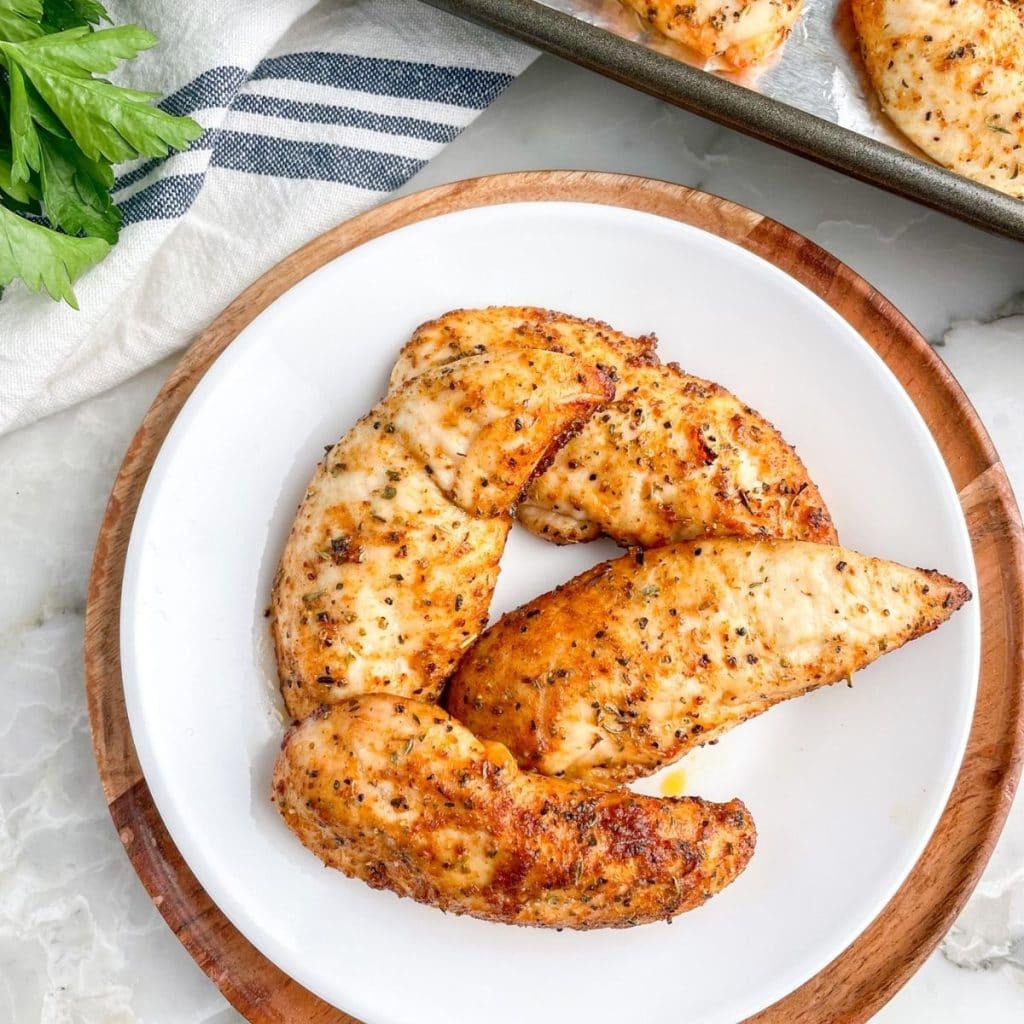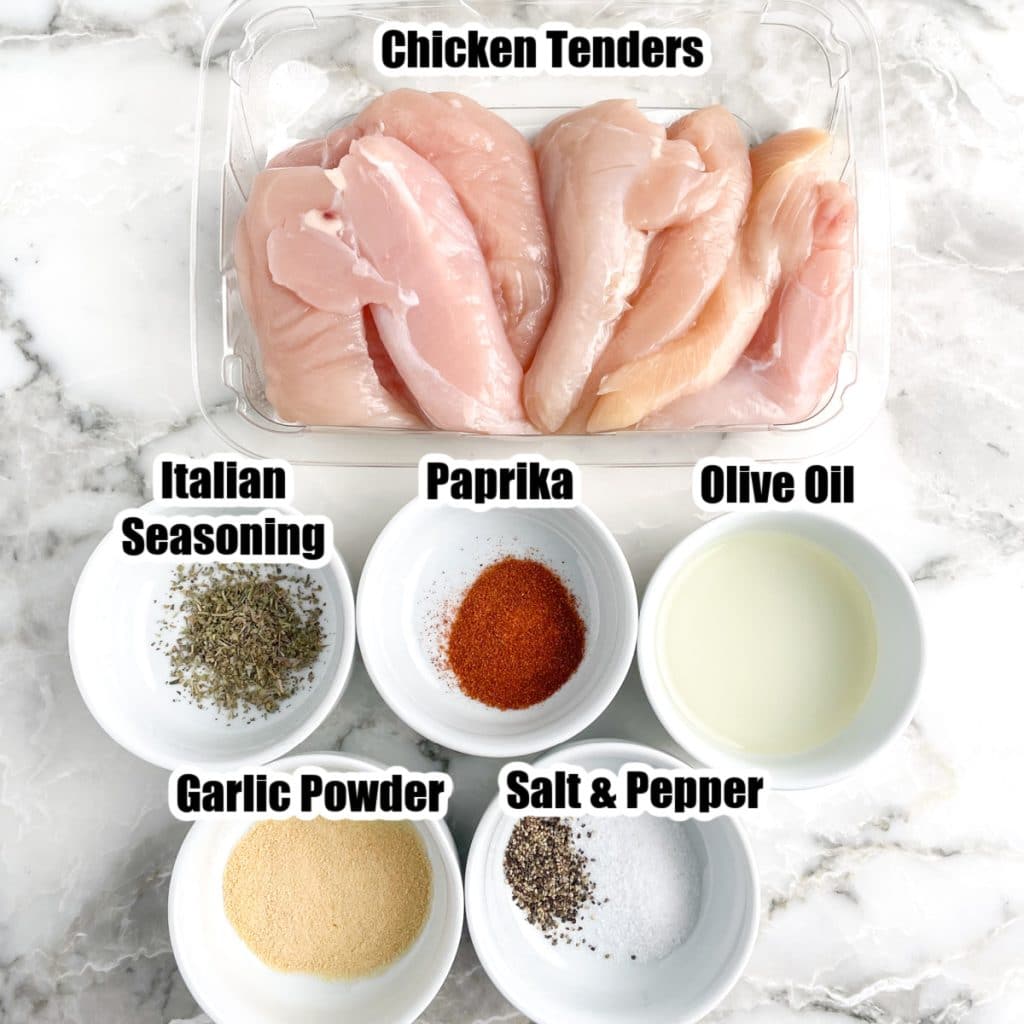Are you tired of soggy, undercooked chicken tenders? Want to achieve that perfect restaurant-quality crispiness at home? I’ve spent years perfecting the art of cooking chicken tenders in my convection oven and I’m excited to share all my secrets with you today!
Convection ovens are a game-changer for cooking chicken tenders. The circulating hot air ensures even cooking and creates that mouthwatering crispy exterior while keeping the inside juicy and tender. Let’s dive into everything you need to know to make the best chicken tenders you’ve ever tasted!
What Temperature Should You Use for Chicken Tenders in a Convection Oven?
The ideal temperature for cooking chicken tenders in a convection oven is 400°F (204°C). This temperature provides the perfect balance – hot enough to crisp up the exterior while allowing the inside to cook thoroughly without drying out.
Remember that convection ovens cook food faster than conventional ovens due to the fan that circulates hot air. If you’re converting a recipe from a conventional oven, you’ll want to:
- Reduce the temperature by about 25°F from what the recipe calls for
- Keep an eye on cooking time as it will likely be shorter
How Long to Cook Chicken Tenders in a Convection Oven
Cooking time is crucial for perfect chicken tenders Nobody wants overcooked, dry tenders or undercooked, unsafe ones!
For fresh chicken tenders at 400°F in a convection oven:
- Thin tenders (about 1/2 inch thick): 15-18 minutes
- Thicker tenders: 18-20 minutes
For frozen chicken tenders
- Pre-cooked frozen tenders: 20-25 minutes
- Raw frozen tenders: 25-30 minutes
Remember that these are general guidelines. The exact time will depend on:
- The thickness of your chicken tenders
- Whether they’re breaded or not
- How full your oven is
- Your individual oven’s performance
Step-by-Step Guide to Perfect Convection Oven Chicken Tenders
Let me walk you through my foolproof method for making amazing chicken tenders in your convection oven:
1. Prepare Your Chicken Tenders
If using fresh chicken:
- Pat the chicken tenders dry with paper towels (this is super important for crispiness!)
- Season with salt and pepper
- If desired, marinate in buttermilk or yogurt for 1-2 hours for extra tenderness
For breaded tenders:
- Set up a breading station with flour, beaten eggs, and breadcrumbs or panko
- Season your flour and breadcrumbs with salt, pepper, and spices
- Dredge tenders in flour, then egg, then breadcrumbs
2. Preheat Your Convection Oven
Always preheat your oven to 400°F before cooking. This takes about 10-15 minutes for most ovens. Preheating is essential for even cooking and that crispy exterior we’re after!
3. Prepare Your Baking Sheet
For best results:
- Use a baking sheet with low sides to allow proper air circulation
- Place a wire rack on the baking sheet if possible (this elevates the tenders and allows air to circulate underneath)
- Lightly spray the rack with cooking spray to prevent sticking
4. Arrange Chicken Tenders Properly
This step is often overlooked but is crucial for convection cooking:
- Place tenders in a single layer with space between each piece
- Avoid overcrowding the pan (cook in batches if necessary)
- The space allows hot air to circulate around each tender for even cooking
5. Bake to Perfection
- Place the baking sheet in the center rack of your preheated convection oven
- Cook for 15-18 minutes (for fresh tenders)
- Flip the tenders halfway through cooking time for even browning
- If extra crispiness is desired, spray lightly with cooking oil before baking
6. Check for Doneness
Safety first! Chicken must reach an internal temperature of 165°F (74°C) to be safe to eat. Here’s how to check:
- Use a meat thermometer inserted into the thickest part of the tender
- Look for clear (not pink) juices when cut
- The meat should be white throughout with no pink areas
7. Rest Before Serving
Let your chicken tenders rest for about 5 minutes after removing from the oven. This allows the juices to redistribute throughout the meat, ensuring moist and tender chicken.
Tips for Extra Crispy Chicken Tenders
Want to take your chicken tenders to the next level? Try these pro tips:
-
Double bread your tenders – After the initial breading, dip them back in egg and breadcrumbs for an extra thick, crispy coating.
-
Add crunch to your coating – Mix panko breadcrumbs with regular breadcrumbs for extra texture. I sometimes add a tablespoon of cornmeal too!
-
Spray with oil – Lightly spray the breaded tenders with cooking oil before baking to help them brown and crisp up beautifully.
-
Don’t skimp on seasoning – Add herbs, spices, grated parmesan, or garlic powder to your breadcrumb mixture for flavor-packed tenders.
-
Try the double cook method – Bake at 350°F for 15 minutes, then increase to 425°F for the final 5 minutes for extra crispiness.
Troubleshooting Common Issues
My chicken tenders aren’t crispy enough
This could be due to:
- Overcrowding the baking sheet
- Not patting the chicken dry before breading
- Too low oven temperature
- Not using a wire rack during cooking
Solution: Make sure to space out your tenders, pat them dry, check your oven temperature with an oven thermometer, and use a wire rack if possible.
My chicken tenders are dry inside
This usually means they’re overcooked. Try:
- Reducing cooking time by 2-3 minutes
- Using a meat thermometer to check doneness earlier
- Brining or marinating the chicken before cooking
The breading is falling off my tenders
To prevent this:
- Make sure to pat the chicken completely dry before breading
- Press the breading firmly onto the chicken
- Let breaded tenders sit for 10-15 minutes before baking to help the coating adhere
- Don’t flip the tenders too early during cooking
Delicious Dipping Sauces for Your Chicken Tenders
What’s a perfect chicken tender without an amazing dipping sauce? Here are some quick and easy options:
- Classic Honey Mustard: Mix 3 parts mayo, 2 parts honey, and 1 part Dijon mustard
- Spicy Sriracha Mayo: Combine mayo with sriracha sauce to taste
- BBQ Ranch: Mix equal parts ranch dressing and BBQ sauce
- Buffalo Sauce: Melt butter and mix with hot sauce
- Sweet & Sour: Mix apricot preserves with a splash of vinegar and soy sauce
Making a Complete Meal
Turn your chicken tenders into a complete meal by adding:
- Oven-roasted vegetables (cook them on a separate rack in the same convection oven)
- A fresh green salad
- Homemade sweet potato fries
- Coleslaw or potato salad
Health Benefits of Convection Oven Cooking
Using a convection oven to cook chicken tenders has several health advantages:
- Requires less oil than deep frying
- Retains more nutrients due to faster cooking times
- Creates crispy exteriors without the extra calories of frying
- Cooks meat more evenly, ensuring food safety
Final Thoughts
Mastering the art of cooking chicken tenders in a convection oven might take a little practice, but the results are so worth it! You’ll get restaurant-quality tenders that are crispy on the outside, juicy on the inside, and healthier than deep-fried alternatives.
Remember the key points:
- Preheat to 400°F
- Don’t overcrowd the pan
- Cook for 15-18 minutes for fresh tenders
- Always check for an internal temperature of 165°F
- Let them rest before serving
We’d love to hear how your convection oven chicken tenders turn out! Drop a comment below with your own tips and tricks, or share your favorite seasoning combinations.
FAQ About Cooking Chicken Tenders in a Convection Oven
Q: Can I cook frozen chicken tenders directly in my convection oven?
A: Yes! Add about 5-10 minutes to the cooking time and make sure they reach 165°F internally.
Q: Do I need to spray my chicken tenders with oil before cooking?
A: It’s not necessary but can help with browning and crispiness.
Q: What’s the difference between cooking chicken tenders in a convection oven vs. an air fryer?
A: They work on similar principles, but air fryers circulate air more intensely and cook faster. If you have both, an air fryer might give slightly crispier results, but convection ovens can cook larger batches.
Q: Can I make gluten-free chicken tenders in a convection oven?
A: Absolutely! Just substitute gluten-free flour and breadcrumbs in your breading mixture.
Q: How do I store leftover chicken tenders?
A: Refrigerate in an airtight container for up to 3 days. Reheat in a convection oven at 350°F for about 10 minutes to restore crispiness.
Now go forth and make the most delicious chicken tenders you’ve ever tasted!

How to store leftovers
If you have leftover chicken tenders, let them cool to room temperature and then place in an airtight container or zip top bag. Keep them in the refrigerator for up to 4 days.
They can also be frozen. You can freeze chicken tenders by letting them cool and then placing them on a baking sheet in the freezer. Once they have frozen, place the tenders in a freezer safe bag or container.

How long to bake chicken tenders at 375 degrees?
How long do you bake chicken tenders in the oven? Using a conventional oven, it should take about 20 minutes to bake chicken tenders at 375 degrees Fahrenheit. This temperature allows the chicken to completely cook while keeping it moist and tender.
If your tenders happen to be small and thin, the cooking time might be more around 15 minutes. The key is to make sure they cook until the internal temperature reaches 165 degrees F.
Chicken tenders – We use a pound of tenders for this recipe. It can easily be doubled if you need more servings.
Spices – This spice blend includes paprika, garlic powder, Italian seasoning, salt, and pepper. You could also use this delicious chicken spice mix or your favorite seasoning blend.
Olive oil – Oil is used to coat the chicken.

